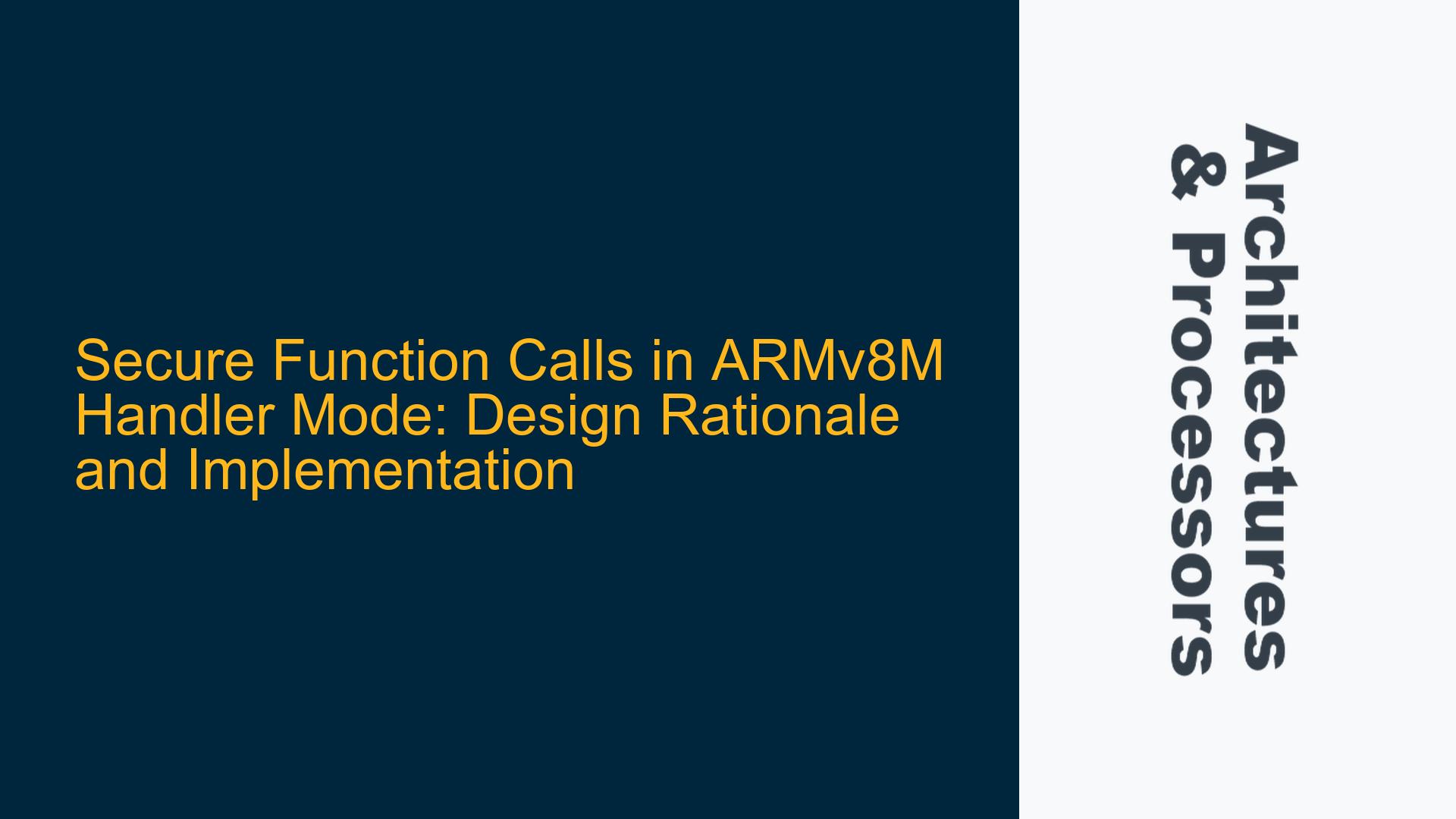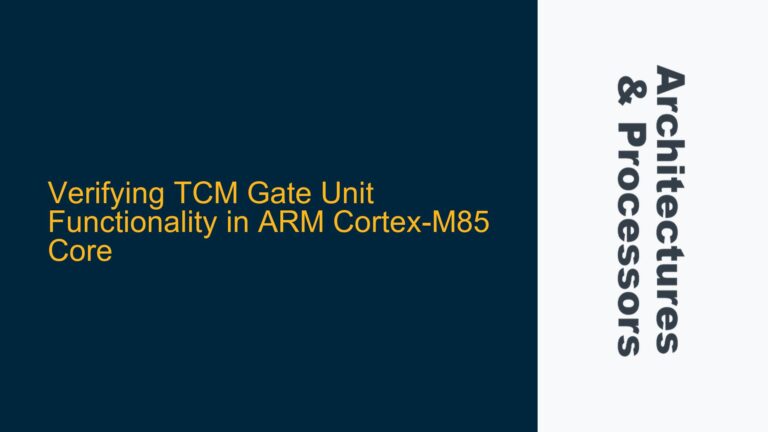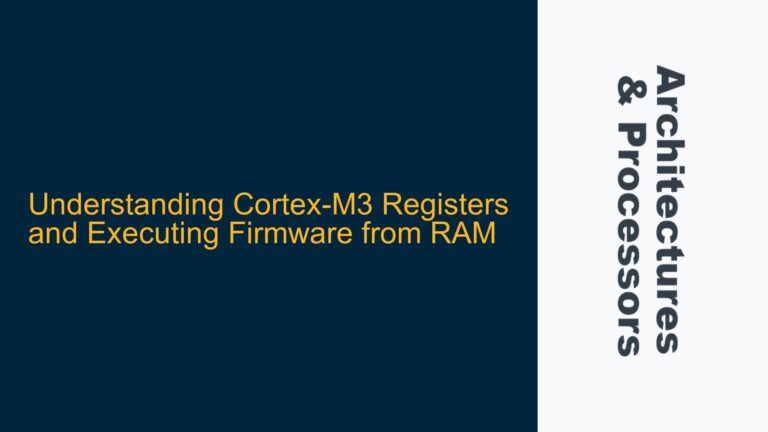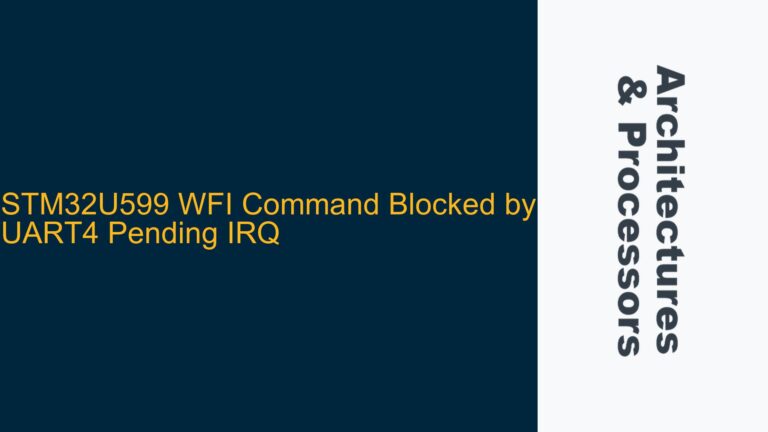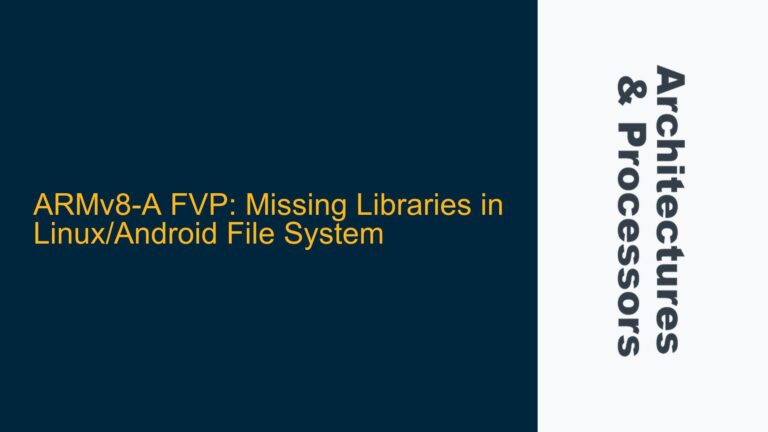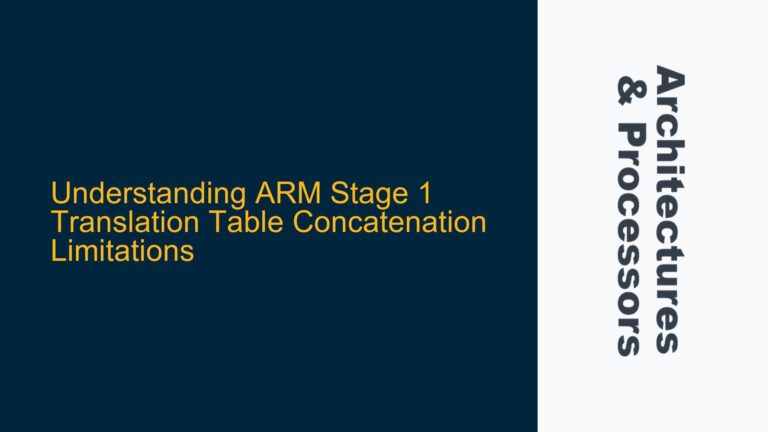ARMv8M Secure Function Calls in Handler Mode: Architectural Intent and Use Cases
The ARMv8-M architecture introduces a robust security model that partitions software execution into secure and non-secure states. This partitioning is critical for modern embedded systems, where security-sensitive operations must be isolated from less trusted code. One of the key design decisions in ARMv8-M is the ability to call secure functions from non-secure code, both in thread mode and handler mode. While thread mode calls are straightforward, the requirement to call secure functions in handler mode has specific architectural and practical motivations.
Handler mode in ARMv8-M is a privileged execution mode typically used for exception handling, including interrupts and system service calls (SVCs). When a non-secure application needs to access a secure service, it often does so through an SVC or an interrupt. The secure function call in handler mode ensures that the transition from non-secure to secure state is tightly controlled and that the secure function executes in a privileged context. This design choice is particularly important for implementing access control, parameter sanitization, and execution context management.
For example, consider a non-secure application that needs to access a cryptographic service provided by the secure firmware. The non-secure application triggers an SVC, which transitions the processor to handler mode. The SVC handler, running in handler mode, then invokes the secure function. This approach ensures that the secure function executes in a privileged context, allowing the secure firmware to perform necessary checks and administrative tasks before granting access to the cryptographic service.
Benefits of Handler Mode Secure Function Calls: Access Control and Context Management
The primary benefit of calling secure functions in handler mode is the ability to enforce access control and manage execution context effectively. When a non-secure application calls a secure function in thread mode, the secure function executes in the context of the calling thread. While this is sufficient for some use cases, it does not provide the same level of control as handler mode.
In handler mode, the secure function executes in a privileged context, allowing the secure firmware to perform additional checks and administrative tasks. For instance, the secure firmware can verify the identity of the calling thread, sanitize input parameters, and prepare the execution context for the secure function. This level of control is particularly important for security-critical operations, where the integrity of the system depends on the proper handling of secure function calls.
Another advantage of handler mode secure function calls is the ability to associate an identity with each caller thread. In a multi-threaded environment, it is often necessary to track which thread is requesting a secure service. Handler mode provides a natural point for associating an identity with the calling thread, as the SVC handler can inspect the thread’s state before invoking the secure function. This capability is essential for implementing fine-grained access control and auditing in secure systems.
Additionally, handler mode secure function calls enable the secure firmware to perform context switching and resource management. For example, the secure firmware may need to allocate resources or switch execution contexts before invoking the secure function. Handler mode provides a convenient point for performing these tasks, as the SVC handler can prepare the execution context and allocate resources before calling the secure function.
Implementing Secure Function Calls in Handler Mode: Best Practices and Considerations
Implementing secure function calls in handler mode requires careful consideration of several factors, including access control, parameter sanitization, and execution context management. The following steps outline best practices for implementing secure function calls in handler mode:
First, the SVC handler must verify the identity of the calling thread and enforce access control. This can be done by inspecting the thread’s state and checking its permissions before invoking the secure function. The SVC handler should also sanitize input parameters to ensure that they do not contain malicious or invalid values. This step is critical for preventing security vulnerabilities such as buffer overflows or injection attacks.
Second, the SVC handler must prepare the execution context for the secure function. This may involve switching to a secure stack, allocating resources, or setting up the secure function’s environment. The SVC handler should also ensure that the secure function executes in a privileged context, as this allows the secure firmware to perform additional checks and administrative tasks.
Third, the secure function must be designed to handle calls from handler mode. This includes ensuring that the function can execute in a privileged context and that it performs any necessary checks or administrative tasks. The secure function should also be designed to handle errors gracefully, as handler mode calls may involve complex interactions between the non-secure and secure states.
Finally, the secure firmware should provide mechanisms for auditing and logging secure function calls. This is particularly important for security-critical operations, where it is necessary to track which threads are accessing secure services and what actions they are performing. The SVC handler can log secure function calls and their outcomes, providing valuable information for debugging and security analysis.
In summary, calling secure functions in handler mode is a key design feature of the ARMv8-M architecture. This approach provides several benefits, including access control, context management, and execution context preparation. By following best practices for implementing secure function calls in handler mode, developers can ensure that their systems are secure, reliable, and efficient.
